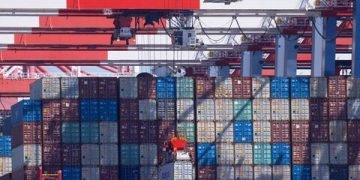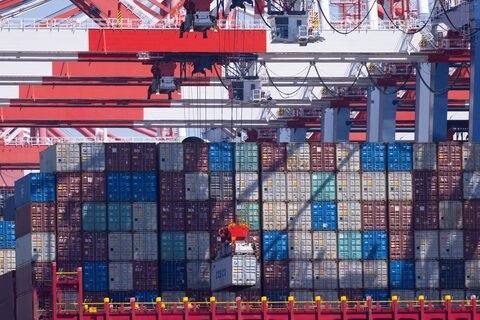By Maria Kalamatas | August 6, 2025 – Singapore
Shipping lines on the transpacific corridor are watching their margins shrink as freight rates continue to fall, weighed down by market oversupply and renewed concerns over U.S. trade tariffs.
Over the past two months, spot rates from major Asian ports to the U.S. West Coast have dropped by more than half, with average prices now just above $2,000 per forty-foot container—levels not seen since early 2023. Routes to the East Coast have also seen a sharp decline, with a 46% reduction in rates reported since June.
“We’ve been through volatile seasons before, but this feels different,” said Yu Tanaka, a logistics manager based in Yokohama. “There’s too much capacity in the water and not enough clarity on what’s coming next from Washington.”
Capacity remains high, profits falter
Despite full ships—averaging over 86% capacity across most lanes—carriers are struggling to remain profitable. The fleet redeployments that followed the Red Sea diversions earlier this year have resulted in too many vessels being routed through Asia-Pacific hubs, flooding the market with space.
“The imbalance is real,” said Rami Ortega, senior analyst at SeaRoute Consulting. “Carriers are running full, but rates aren’t high enough to cover operating costs. It’s a margin squeeze, plain and simple.”
U.S. trade policy keeps market on edge
The uncertainty stems in part from potential new U.S. tariffs targeting electronics, automotive parts, and other high-volume imports from Asia. Some shippers have rushed to bring in goods ahead of any policy changes, but the boost in volume has been short-lived.
Ports in Asia remain fluid, with minimal congestion, but American terminals are bracing for a possible dip in throughput during what is typically peak season.
“Clients are cautious. They’re asking more questions about price volatility and potential supply chain interruptions,” said Clara Mejía, an operations director at a freight forwarder in Manila.
Outlook: volatile and buyer-driven
Looking ahead, most analysts expect rates to remain under pressure through the third quarter. Contract negotiations for 2026 are likely to tilt in favor of shippers, many of whom are demanding new clauses to hedge against future rate swings.
“Shippers have regained leverage—for now,” Mejía added. “Unless demand rebounds or capacity gets pulled back, we’re in for a bumpy few months.”























